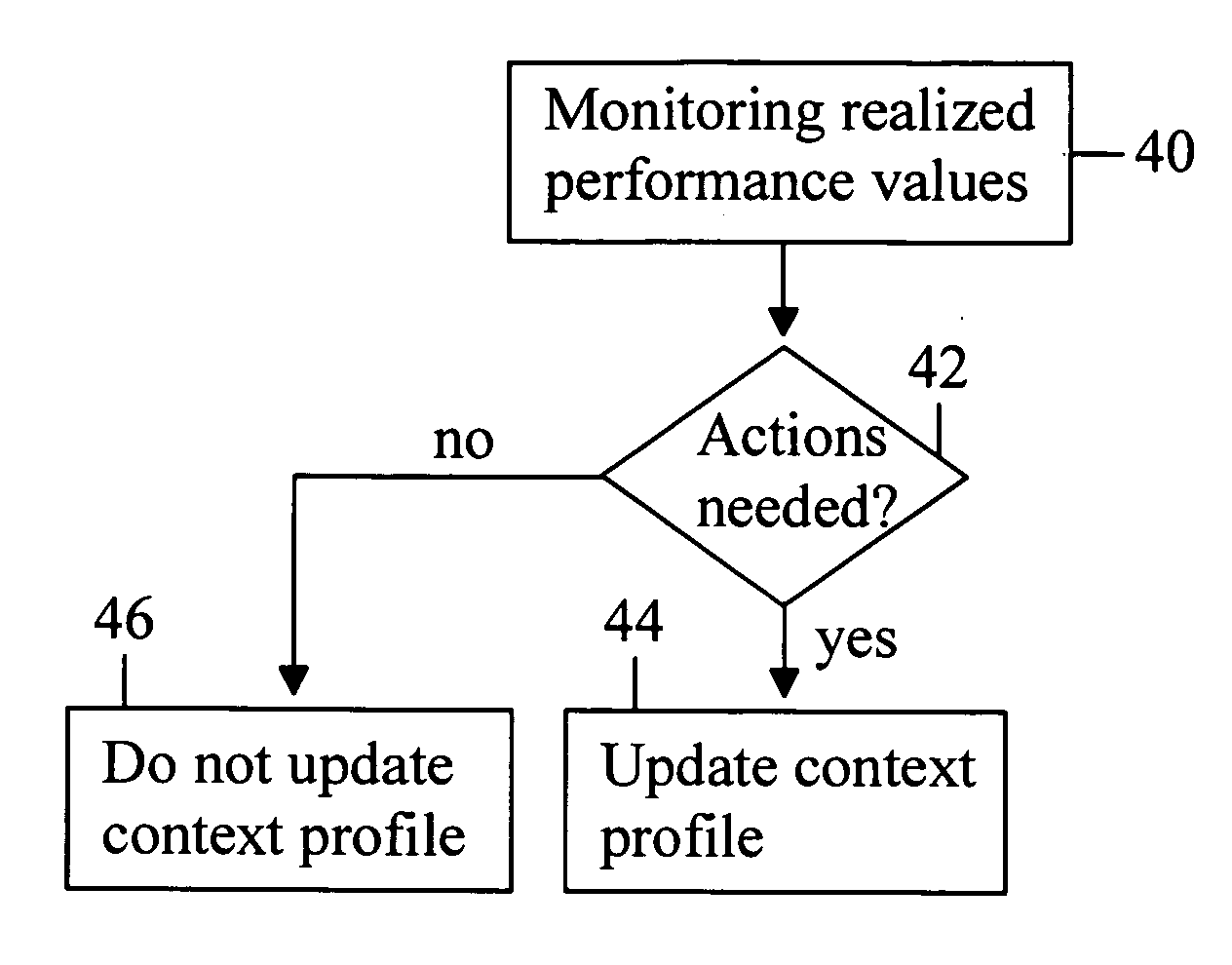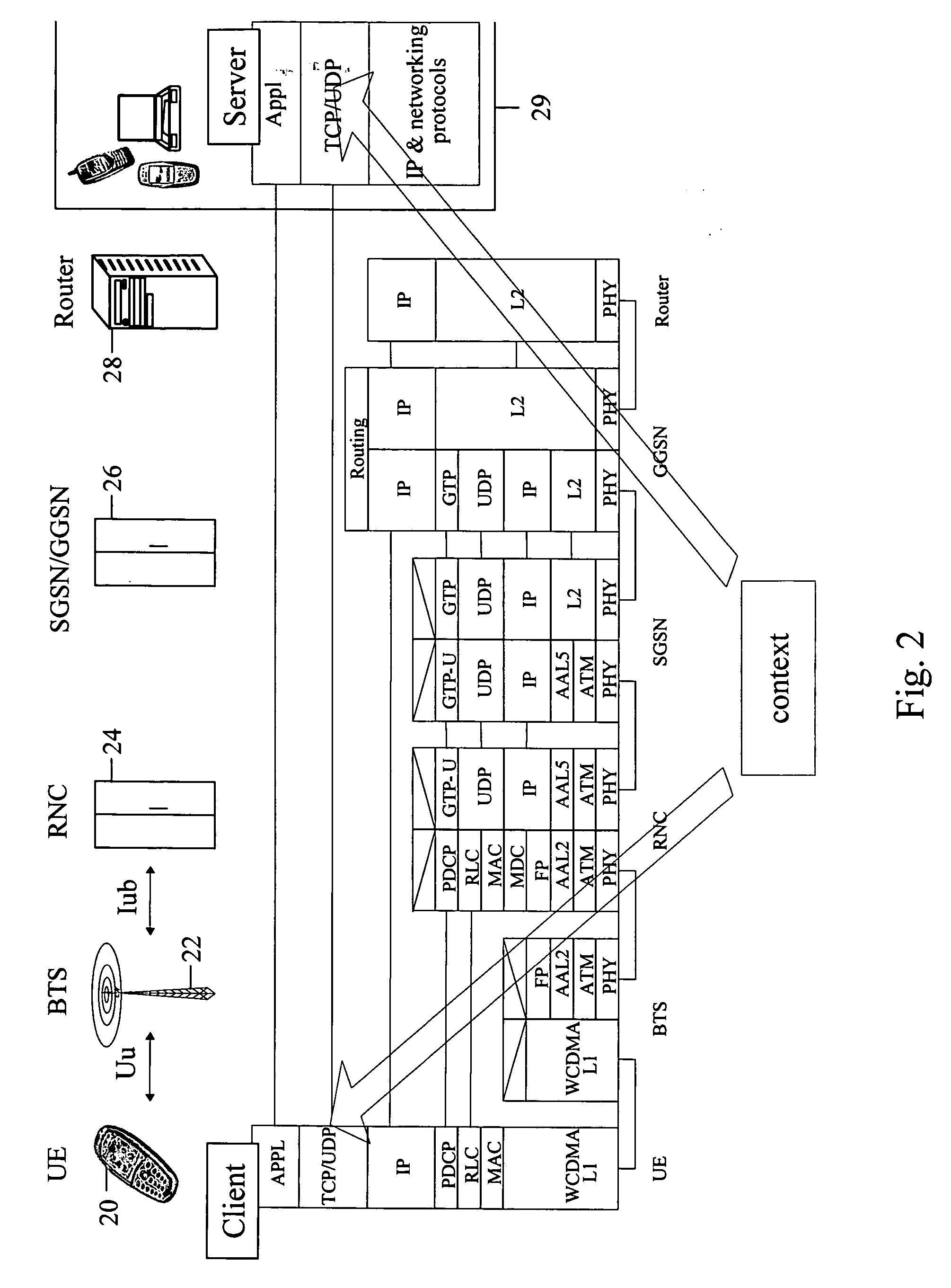Context profile for data communications
a data communication and context profile technology, applied in the field of communication networks, can solve the problems of tcp, which includes a few unfavourable features, requires maintaining an additional state variable, and the congestion window has gotten too large, so as to avoid the tcp congestion control fallback, increase the overall capacity, and facilitate resource utilization and allocation. smooth
- Summary
- Abstract
- Description
- Claims
- Application Information
AI Technical Summary
Benefits of technology
Problems solved by technology
Method used
Image
Examples
Embodiment Construction
[0114] Reference will now be made in detail to the embodiments of the present invention, examples of which are illustrated in the accompanying drawings.
[0115]FIG. 2 discloses one embodiment of a general view of a system according to the invention. Figure 2 discloses a plurality of different network elements between user equipment 20 and a server computer 28: a base station (BTS) 22, a radio network controller (RNC) 24, a serving GPRS support node (SGSN) 26, and a gateway GPRS support node (GGSN) 26. A set of different protocol stacks is used between the network elements.
[0116] Both user equipment 20 and server computer 29 implement the Transmission Control Protocol (TCP) and the Internet Protocol (IP). Characteristic for the invention is that besides implementing the TCP, user equipment and server 29 implement an extension of the TCP transport protocol. The novel idea of the invention is that when opening and configuring a port of a transport layer protocol, the application using ...
PUM
 Login to View More
Login to View More Abstract
Description
Claims
Application Information
 Login to View More
Login to View More - R&D
- Intellectual Property
- Life Sciences
- Materials
- Tech Scout
- Unparalleled Data Quality
- Higher Quality Content
- 60% Fewer Hallucinations
Browse by: Latest US Patents, China's latest patents, Technical Efficacy Thesaurus, Application Domain, Technology Topic, Popular Technical Reports.
© 2025 PatSnap. All rights reserved.Legal|Privacy policy|Modern Slavery Act Transparency Statement|Sitemap|About US| Contact US: help@patsnap.com



